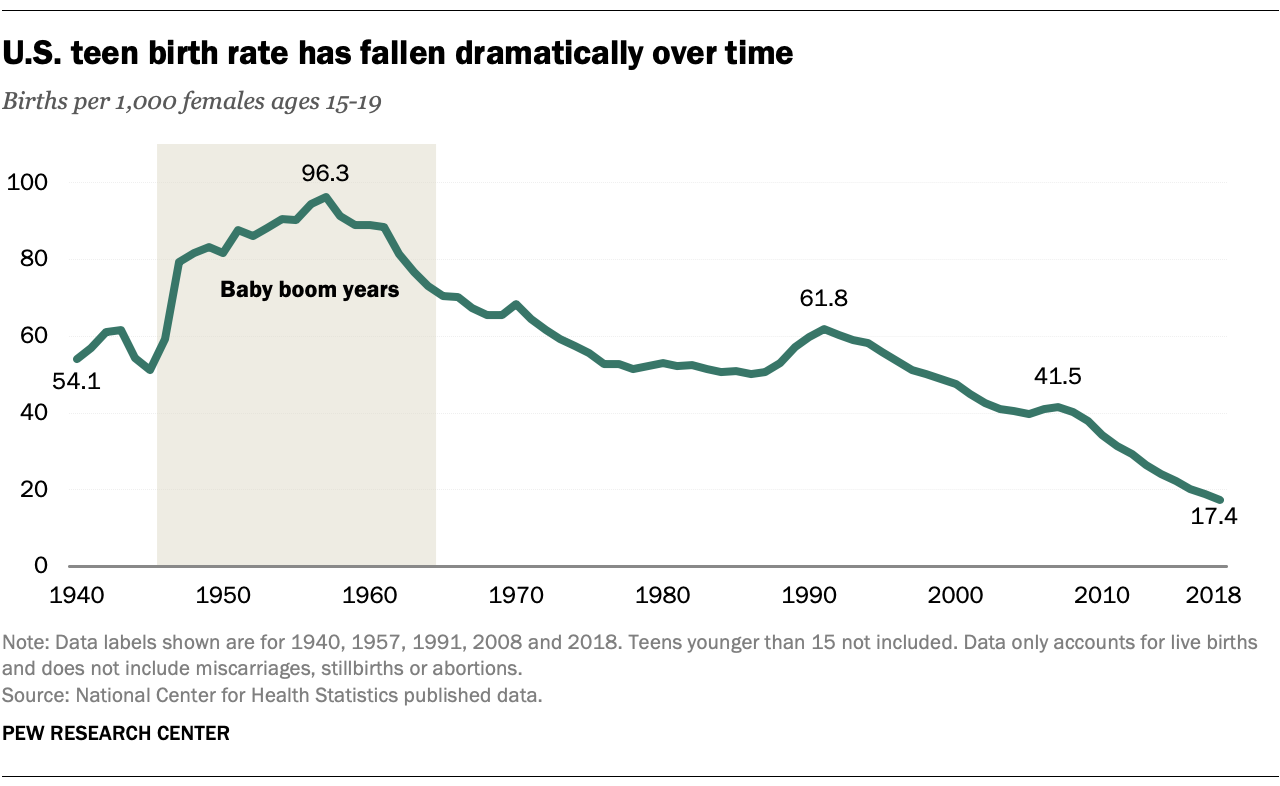
Teen Pregnancy in the United States: A Comprehensive Statistical Analysis
Introduction
Teen pregnancy remains a significant public health concern in the United States, with far-reaching consequences for both the young mothers and their children. This comprehensive statistical analysis aims to provide an in-depth understanding of the prevalence, trends, and disparities associated with teen pregnancy in the country. By examining the latest data from reputable sources, we can gain valuable insights into the scope of the issue and identify areas for targeted interventions.
Prevalence and Trends
According to the Centers for Disease Control and Prevention (CDC), the teen birth rate in the United States has declined significantly over the past several decades. In 2020, the rate was 17.4 births per 1,000 females aged 15-19, a 75% decrease from its peak in 1991. However, despite this progress, the United States still has one of the highest teen birth rates among developed countries.
The decline in teen pregnancy rates has been attributed to various factors, including increased access to contraception, comprehensive sex education, and improved economic opportunities for young women. However, disparities persist across different demographic groups.
Racial and Ethnic Disparities
Racial and ethnic disparities in teen pregnancy rates are a major concern. In 2020, the teen birth rate among Hispanic females was 21.5 per 1,000, compared to 14.3 per 1,000 among non-Hispanic white females and 19.1 per 1,000 among non-Hispanic black females. These disparities are influenced by a complex interplay of factors, including socioeconomic status, access to healthcare, and cultural norms.
Socioeconomic Disparities
Teen pregnancy rates are also higher among young women from low-income households. In 2020, the teen birth rate among females living below the poverty level was 28.2 per 1,000, compared to 11.3 per 1,000 among females living at or above the poverty level. Poverty is associated with limited access to education, healthcare, and other resources that can support healthy decision-making and prevent unintended pregnancies.
Consequences for Young Mothers
Teen pregnancy has significant consequences for young mothers, both in the short and long term. Young mothers are more likely to experience health complications during pregnancy and childbirth, including premature birth, low birth weight, and postpartum depression. They are also more likely to drop out of school, have lower educational attainment, and experience economic hardship.
Consequences for Children
Children born to teen mothers face a range of challenges, including higher rates of developmental delays, cognitive impairments, and behavioral problems. They are also more likely to live in poverty and experience adverse childhood experiences, which can have long-lasting effects on their health and well-being.
Prevention Strategies
Preventing teen pregnancy requires a multifaceted approach that addresses the underlying factors contributing to the issue. Effective prevention strategies include:
- Comprehensive sex education: Providing young people with accurate and age-appropriate information about sexual health, contraception, and healthy relationships.
- Access to contraception: Ensuring that young people have access to a range of contraceptive methods, including condoms, birth control pills, and long-acting reversible contraceptives (LARCs).
- Economic empowerment: Supporting young women through education, job training, and other programs that provide them with the skills and resources to make healthy choices.
- Community-based programs: Engaging community organizations, schools, and healthcare providers in providing support and resources to young people and their families.
Conclusion
Teen pregnancy remains a significant public health concern in the United States, with far-reaching consequences for both young mothers and their children. While progress has been made in reducing teen birth rates, disparities persist across different demographic groups. Effective prevention strategies are essential to address the underlying factors contributing to teen pregnancy and to ensure that all young people have the opportunity to reach their full potential. By investing in comprehensive sex education, access to contraception, economic empowerment, and community-based programs, we can create a future where teen pregnancy is rare and all young people have the knowledge, skills, and resources to make healthy choices.